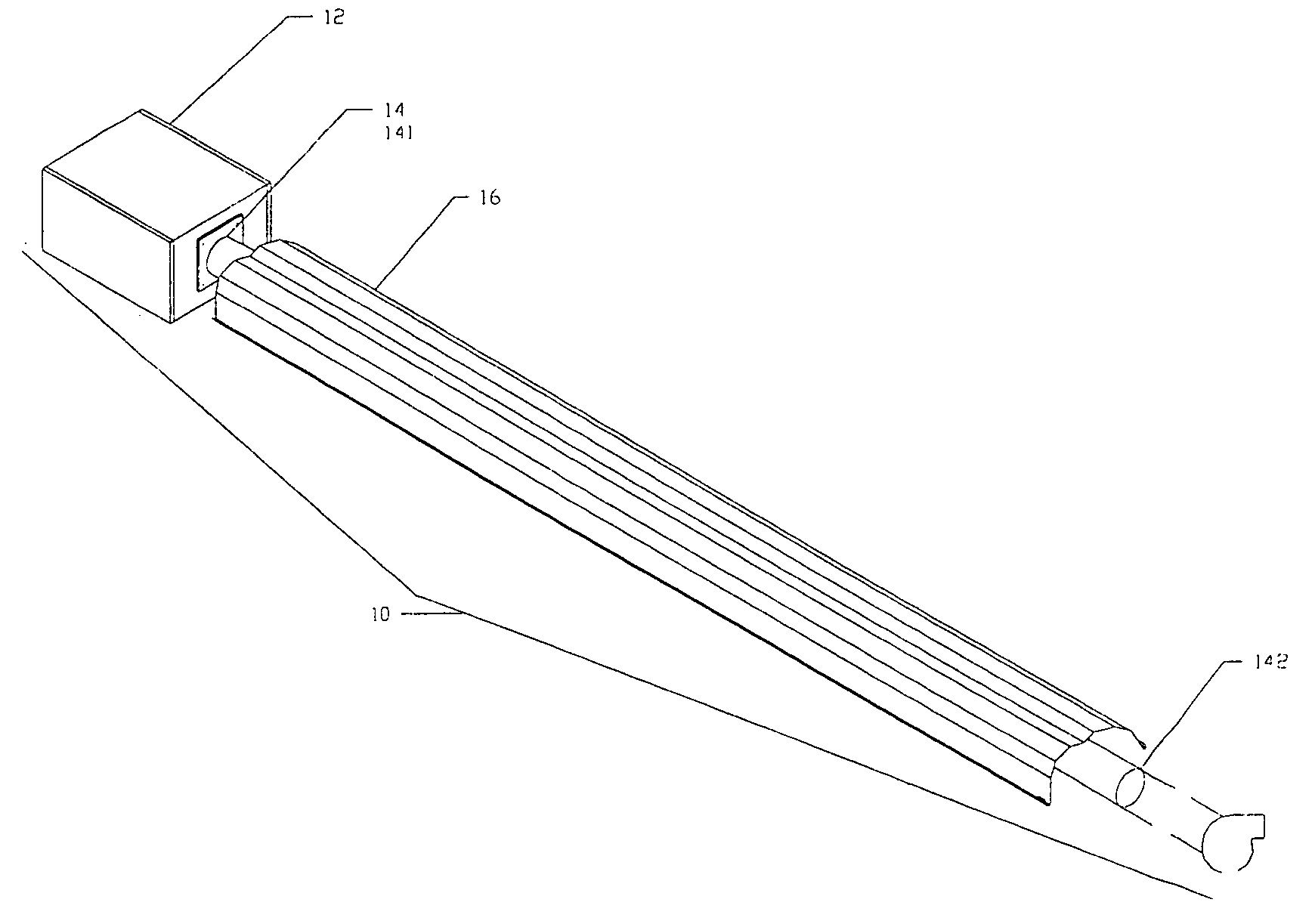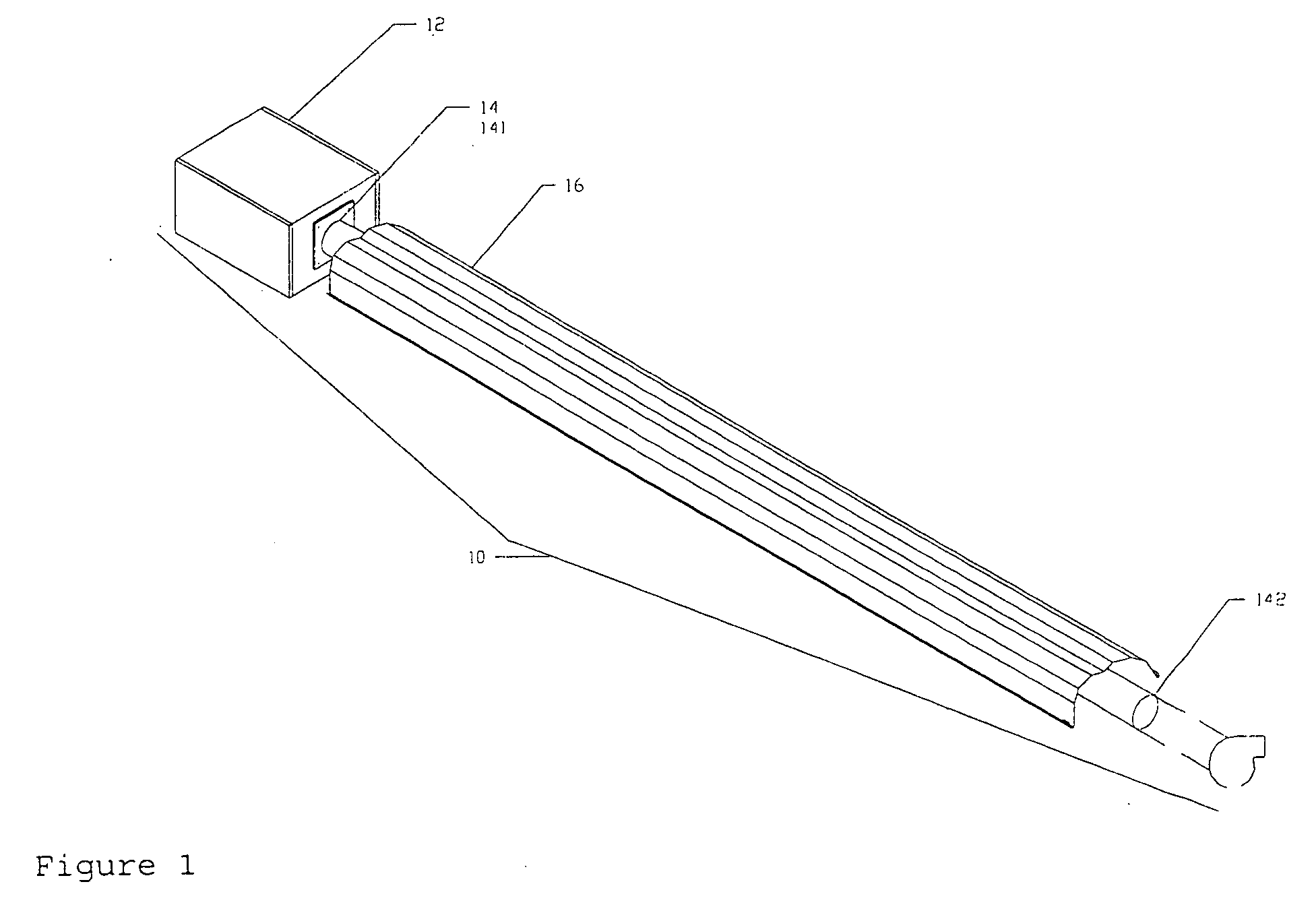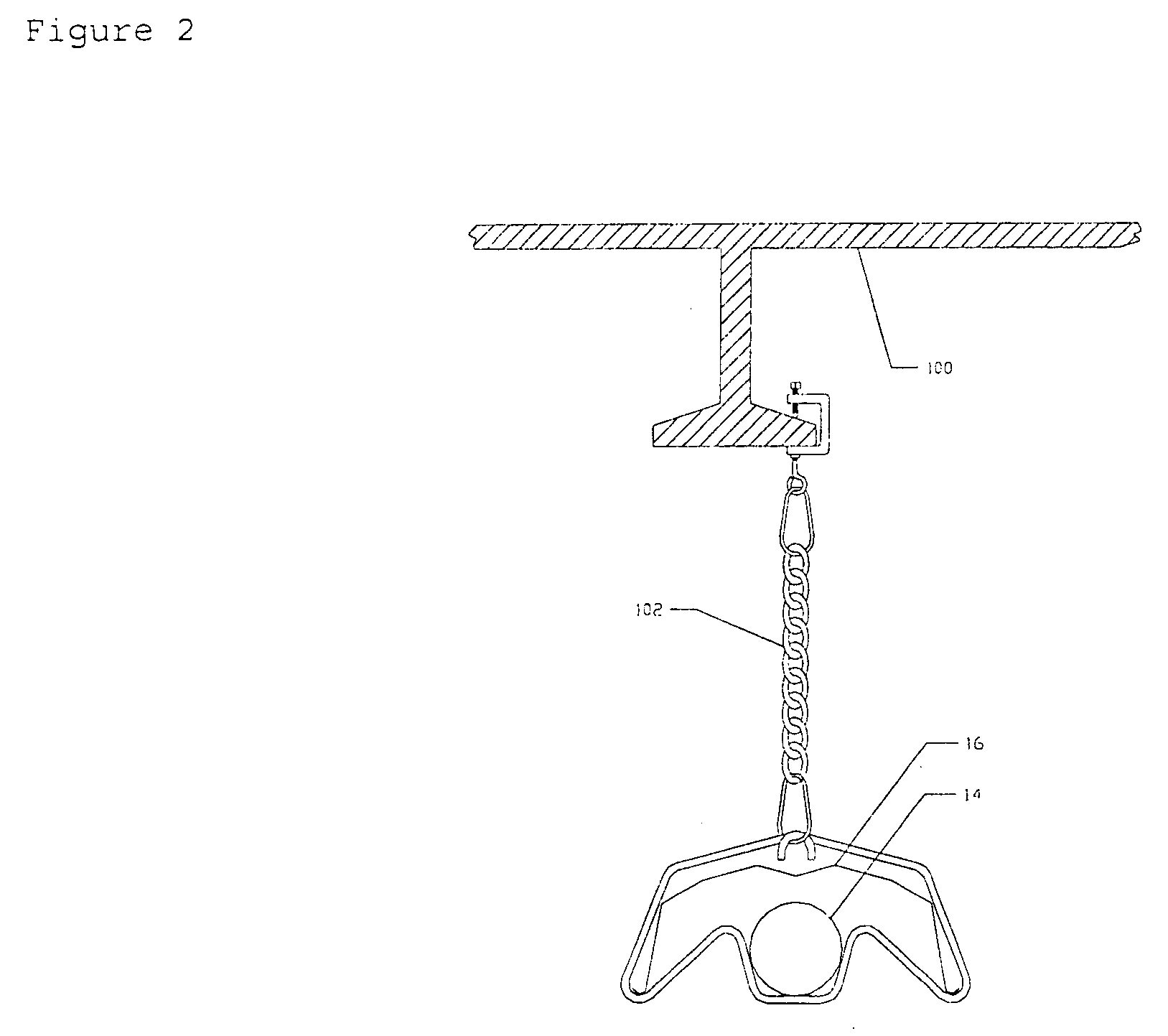Variable input radiant heater
a radiant heater and variable input technology, applied in the direction of heating types, combustion types, combustion failure safes, etc., can solve the problems of regulating the excess air percentage, complex detection and control systems, and prohibitively expensive in many applications,
- Summary
- Abstract
- Description
- Claims
- Application Information
AI Technical Summary
Problems solved by technology
Method used
Image
Examples
Embodiment Construction
[0024] Generically, the present invention is directed to a single radiant heater or multi-burner radiant heating system. In particular, the present invention is directed to a single radiant heater or multi-burner radiant heating system that modulates the burner input by varying fuel and combustion air supply to the burner's mixing apparatus. The apparatus continuously varies the input of radiant gas heaters that respond to heat demand. The variable input radiant heater apparatus have a burner housing with a combustion air and fuel inlet and a burner assembly for mixing the fuel and air, and conveying the mixture into a heat exchanger for combustion. Combustion takes place inside the heat exchanger and resulting hot products of combustion are moved to through the heat exchanger to the exhaust end due to air pressure from a combustion air blower providing either positive air pressure from the burner end of the heater or negative pressure from the exhaust end of the heater. At the exha...
PUM
 Login to view more
Login to view more Abstract
Description
Claims
Application Information
 Login to view more
Login to view more - R&D Engineer
- R&D Manager
- IP Professional
- Industry Leading Data Capabilities
- Powerful AI technology
- Patent DNA Extraction
Browse by: Latest US Patents, China's latest patents, Technical Efficacy Thesaurus, Application Domain, Technology Topic.
© 2024 PatSnap. All rights reserved.Legal|Privacy policy|Modern Slavery Act Transparency Statement|Sitemap



